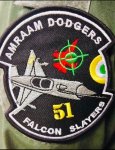BALAKOT: MORE DETAILS REVEALED
07-May-2019 02:57
As it is well known now, the IAF strike was carried out at around 3.30 am. According to my informations, an Army unit, from their camp in Shinkiari, arrived at the location of the strike on February 26 at around 6 am, two and a half hours later. Shinkari is around 20 kms away from Balakot, and the Army unit would have taken around 35-40 minutes to reach the location from where the climb to the camp begins. Incidentally, Shinkiari is also a base of the Pakistan Army, with the Junior Leaders Academy (JLA) located there. Immediately after the Army unit arrival, the injured were taken to a Harkat-ul-Mujahideen camp, located in Shinkiari and treated by Pakistan Army doctors. Local sources say around 45 persons are still undergoing treatment in this camp, while around 20 have died during treatment due to serious injuries. Those who have recovered are still in custody of the Army and have not been discharged. Based on the different inputs that have been gathered over the last several weeks through my contact, it can now also be safely said that the impact of the strike immediately killed a large number of JeM cadres. The numbers estimated have ranged from 130-170, including those who have died during treatment. Those killed included 11 trainers, ranging from bomb makers to those imparting weapons training. Two of these trainers were from Afghanistan. To prevent news on the fatalities leaking through statements of family members of cadres, a group of JeM members also visited the families of those killed and handed over cash compensation to them. Adjacent to the Blue Pine Hotel, located on the foothill from where one starts the trek for the JeM camp, is a freshly painted signboard that indicates the presence of the Taleem-ul-Quran on the hilltop. Unlike the earlier board, all links to JeM leader and now internationally proscribed terrorist Masood Azhar has been removed. The camp area is still under the control of the Army, with a Captain rank officer of the Mujahid battalion in command. The access to the dust track leading to the camp is still restricted, even to the local police. Apart from a few children and 3-4 teachers, the camp has been cleared of any traces of it earlier being a JeM camp. Meanwhile, inhabitants of Bisian township, near the JeM camp, still discuss of some locals having noticed vehicles dumping rubble in the Kunhar River during the first night after the strike. There is also talk about the JeM leadership having assured its cadres that the group will take its revenge when the time is ripe.
Francesca Marino
Source : BALAKOT: MORE DETAILS REVEALED
07-May-2019 02:57
As it is well known now, the IAF strike was carried out at around 3.30 am. According to my informations, an Army unit, from their camp in Shinkiari, arrived at the location of the strike on February 26 at around 6 am, two and a half hours later. Shinkari is around 20 kms away from Balakot, and the Army unit would have taken around 35-40 minutes to reach the location from where the climb to the camp begins. Incidentally, Shinkiari is also a base of the Pakistan Army, with the Junior Leaders Academy (JLA) located there. Immediately after the Army unit arrival, the injured were taken to a Harkat-ul-Mujahideen camp, located in Shinkiari and treated by Pakistan Army doctors. Local sources say around 45 persons are still undergoing treatment in this camp, while around 20 have died during treatment due to serious injuries. Those who have recovered are still in custody of the Army and have not been discharged. Based on the different inputs that have been gathered over the last several weeks through my contact, it can now also be safely said that the impact of the strike immediately killed a large number of JeM cadres. The numbers estimated have ranged from 130-170, including those who have died during treatment. Those killed included 11 trainers, ranging from bomb makers to those imparting weapons training. Two of these trainers were from Afghanistan. To prevent news on the fatalities leaking through statements of family members of cadres, a group of JeM members also visited the families of those killed and handed over cash compensation to them. Adjacent to the Blue Pine Hotel, located on the foothill from where one starts the trek for the JeM camp, is a freshly painted signboard that indicates the presence of the Taleem-ul-Quran on the hilltop. Unlike the earlier board, all links to JeM leader and now internationally proscribed terrorist Masood Azhar has been removed. The camp area is still under the control of the Army, with a Captain rank officer of the Mujahid battalion in command. The access to the dust track leading to the camp is still restricted, even to the local police. Apart from a few children and 3-4 teachers, the camp has been cleared of any traces of it earlier being a JeM camp. Meanwhile, inhabitants of Bisian township, near the JeM camp, still discuss of some locals having noticed vehicles dumping rubble in the Kunhar River during the first night after the strike. There is also talk about the JeM leadership having assured its cadres that the group will take its revenge when the time is ripe.
Francesca Marino
Source : BALAKOT: MORE DETAILS REVEALED
Last edited:





